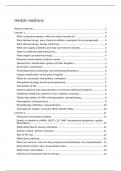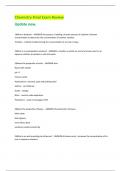Summary
Herbal summary all lectures
- Course
- Institution
All lectures are in this document included, the key points are used which were given by the professor. It was said that you can pass the course when learning the key points. The exam was 55% about the general info lecture 1-5, and 45% about the herbal medicines. In the lectures a lot of informatio...
[Show more]





